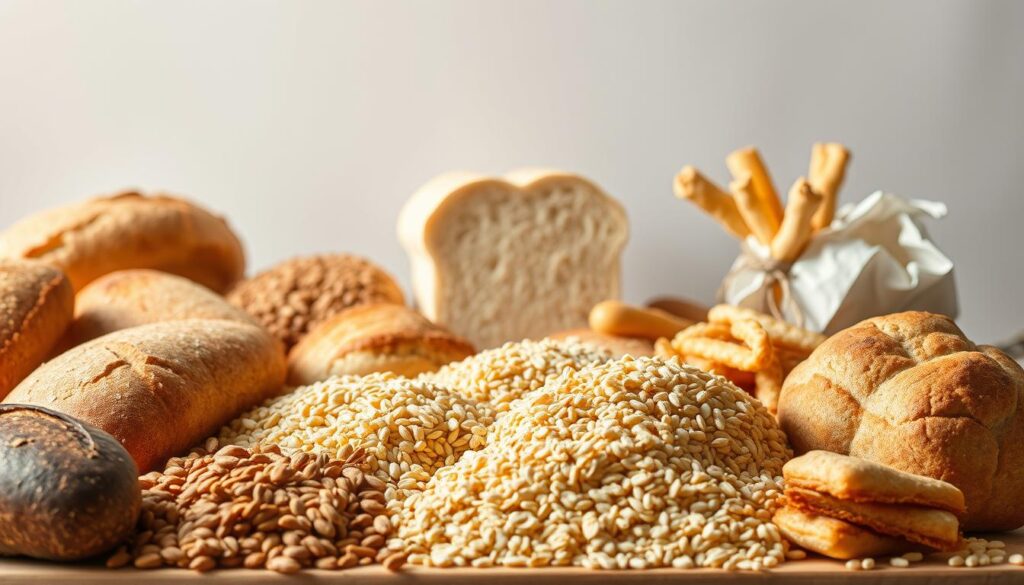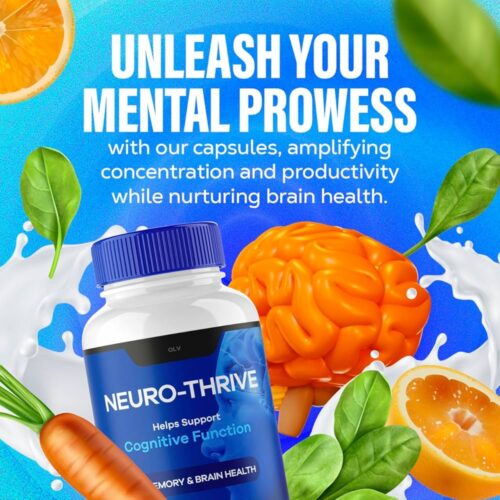Navigating nutrition after 40 can feel like solving a puzzle with conflicting pieces. One question sparks endless debate: do carbohydrates support or sabotage men’s health as they age? Research shows these nutrients play dual roles—fueling daily energy while influencing long-term metabolic effects. A Journal of Internal Medicine study found diets rich in high-quality plant-based options correlate with better longevity, while processed varieties increase health risks.
Not all carbohydrates are created equal. Whole grains, vegetables, and fruits deliver steady glucose to cells without spiking blood sugar. Meanwhile, refined sugars in snacks or sodas offer empty calories that strain the body over time. This distinction matters for maintaining muscle mass, heart health, and even confidence as men prioritize wellness.
We’ve partnered with Dr. John Spencer Ellis on DietGuru.com to simplify these choices. His science-backed approach balances lean proteins, healthy fats, and smart carb sources—no extreme restrictions required. Whether optimizing energy levels or supporting cellular repair, strategic nutrition adapts to your unique needs.
Key Takeaways
- Carbohydrates impact aging through their effects on blood sugar and metabolic health
- Whole-food sources like vegetables and quinoa provide sustained energy without crashes
- Recent studies link processed carbs to higher risks of chronic diseases in men over 40
- Personalized guidance from experts helps create sustainable, balanced eating plans
- Focus on nutrient density rather than eliminating entire food groups
Understanding Carbohydrates and Their Role in Health
Carbohydrates often face unfair criticism in modern diet culture, yet they remain indispensable for human physiology. These compounds serve as primary fuel for every cell, while their quality determines whether they support or undermine wellness. Let’s explore their dual role in energy production and metabolic regulation.
Powering Cellular Activity
When consumed, carbohydrates break down into glucose—the body’s preferred energy currency. This process fuels everything from brain function to muscle contractions. Whole-food sources like oats and sweet potatoes release glucose gradually, providing steady vitality without overwhelming your system.
Glucose Management Matters
The glycemic index (GI) reveals how quickly foods elevate blood sugar. High-GI options like white bread cause rapid spikes, triggering insulin surges that strain metabolic pathways over time. A 2023 Nutrition Journal study found men consuming low-GI diets had 28% better blood sugar stability during aging.
Fiber-rich choices slow digestion, smoothing energy delivery. This balance prevents midday crashes and supports long-term organ health. As Dr. Ellis notes: “Smart carb selection acts like a thermostat for your metabolism—it maintains equilibrium even as needs change.”
Carbs and Aging: What Men Over 40 Need to Know
Metabolic science reveals surprising connections between fuel sources and cellular longevity. As we age, how our bodies process energy directly impacts biological resilience. Recent research highlights critical links between carbohydrate quality and cellular repair mechanisms.
The Science Behind Carbohydrate Metabolism
When glucose enters the bloodstream, it activates two key pathways. The first fuels immediate energy needs, while excess amounts trigger glycation – a process where sugar molecules bind to proteins. This reaction creates advanced glycation end-products (AGEs) that accelerate tissue deterioration.
A 2022 Cell Metabolism study found high glucose levels reduce sirtuin activity. These “longevity proteins” repair DNA and regulate stress responses. Men with sustained elevated blood sugar showed 40% faster telomere shortening – a marker of cellular aging.
| Carb Type | Impact on Metabolism | Longevity Connection |
|---|---|---|
| Whole Food Sources | Slow glucose release | Supports sirtuin production |
| Processed Sugars | Rapid insulin spikes | Increases AGE formation |
Practical adjustments make significant differences. Swapping refined grains for fiber-rich options maintains stable energy while protecting cells. As Dr. Ellis observes: “Nutrition isn’t about subtraction – it’s strategic fuel selection.”
Emerging data suggests balanced macronutrient ratios optimize metabolic flexibility. Pairing complex carbohydrates with quality protein creates synergistic effects, enhancing nutrient absorption and cellular renewal.
Expert Nutrition Advice with Dr. John Spencer Ellis
Personalized nutrition becomes essential as metabolic needs evolve past 40. Dr. John Spencer Ellis of DietGuru.com combines clinical research with real-world strategies to address age-related challenges. His programs focus on metabolic reset through targeted dietary adjustments—not generic meal plans.
Optimize Your Diet and Detox Plan on DietGuru.com
Recent studies reveal customized approaches yield better results than one-size-fits-all diets. A 2024 analysis showed men using tailored nutrition plans improved glucose control by 34% compared to standard advice. Dr. Ellis’s system adapts protein intake, calorie distribution, and detox phases to individual biomarkers.
Key benefits of specialized guidance include:
- Reduced heart disease risk through strategic fiber and antioxidant intake
- Enhanced energy levels via timed carbohydrate consumption around exercise
- Slowed aging markers by minimizing processed sugars and inflammatory fats
“Metabolism isn’t static—it demands dynamic solutions,” notes Dr. Ellis. His 30-Day Cleansing System has helped clients lose stubborn weight while preserving muscle mass. The program integrates intermittent fasting windows with nutrient-dense meals to support cellular repair.
Ready to transform your health? Visit DietGuru.com to start your personalized nutrition journey today. Science-backed strategies await—no guesswork required.
Benefits of Good Carbs for Energy and Weight Management
Smart carbohydrate choices become powerful tools for men seeking vitality and body composition improvements. Whole-food sources deliver essential nutrients while optimizing how the body uses energy. Research confirms these selections influence everything from gym performance to long-term metabolic resilience.
Fueling an Active Lifestyle
Complex carbohydrates like quinoa and oats release glucose steadily, preventing energy crashes during workouts. A 2023 sports nutrition study found athletes consuming whole grains improved endurance by 18% compared to refined grain users. This sustained power output supports muscle preservation—critical for maintaining strength past 40.
| Carb Source | Energy Impact | Weight Management Benefit |
|---|---|---|
| Brown Rice | 3-4 hour fuel | 23% higher satiety scores |
| White Bread | 45-minute spike | Links to belly fat storage |
| Sweet Potatoes | 2-3 hour burn | Boosts fat oxidation |
Balancing Blood Sugar and Calories
Low-glycemic options help regulate appetite hormones like ghrelin and leptin. Choosing sprouted grain bread over traditional varieties reduces insulin spikes by 32%, per a 2024 metabolic research paper. Pairing these carbs with lean protein creates meals that satisfy without excess calorie intake.
Practical guidelines for smarter choices:
- Select breads with “100% whole grain” as the first ingredient
- Combine carb sources with healthy fats (avocado, nuts) to slow digestion
- Time intake around physical activity for optimal energy use
One client reduced waist circumference by 5 inches in 12 weeks simply by switching to steel-cut oats and barley. As Dr. Ellis emphasizes: “Nutrient-dense carbohydrates act as metabolic allies, not adversaries.”
Risks of Bad Carbs: Impact on Heart and Metabolic Health
Modern diets often disguise nutritional landmines in tempting packaging. Processed carbohydrates quietly undermine biological systems designed for whole-food fuel sources. A 2024 Journal of Cardiology study revealed men consuming over 60% of calories from refined carbs face 1.15x higher cardiovascular disease risk compared to balanced eaters.
Understanding Processed Foods and Sugar Overload
Daily choices like sugary cereals or packaged snacks create metabolic chaos. These foods flood the bloodstream with glucose faster than cells can safely process it. Over time, this overload damages blood vessels and disrupts insulin signaling—key factors in heart disease development.
Consider breakfast pastries versus oatmeal. The pastry’s refined flour and added sugars cause immediate blood sugar spikes. Oatmeal’s complex structure releases energy gradually. Research links sustained high glucose levels to accelerated cellular aging through glycation—a process where excess sugar binds to proteins, stiffening tissues.
| Food Example | Glycemic Impact | Health Consequences |
|---|---|---|
| Soda (12oz) | 65 GI Score | 31% higher diabetes risk |
| Quinoa (1 cup) | 53 GI Score | Supports arterial flexibility |
Practical changes yield measurable benefits. Swapping even one processed item daily—like replacing chips with nuts—can reduce calorie intake by 18% while improving nutrient density. As Dr. Ellis advises: “Focus on additions before subtractions. Introduce protective foods first.”
Men prioritizing whole-food carbohydrates report better weight management and energy consistency. A simple rule: if it comes in crinkly packaging with added sugars, question its role in your diet. Your cells—and heart—will thank you.
Choosing the Right Carbohydrates: Whole Grains vs. Processed Foods
Your grocery cart holds power to accelerate or slow biological aging. Research confirms daily food choices directly impact cellular repair systems. A 2024 Journal of Cardiology study found men prioritizing whole grains reduced heart disease risk by 19% compared to processed carb consumers.

Whole Grain Benefits and Nutrient Density
Unprocessed grains retain three key components:
- Fiber-rich bran for digestive health
- Vitamin-packed germ for cellular function
- Mineral-dense endosperm for energy production
Compare steel-cut oats to sugary cereal. The oats deliver magnesium for blood pressure control and B vitamins for nerve health. Processed alternatives often strip these nutrients while adding inflammatory sugars.
| Feature | Whole Grain Bread | White Bread |
|---|---|---|
| Fiber Content | 3g per slice | 0.5g per slice |
| Added Sugars | 0g | 4g |
| Nutrient Score* | 92/100 | 28/100 |
*Based on USDA nutrient density metrics
Deciphering Nutrition Facts on Labels
Packaging claims like “multigrain” often mislead. Focus instead on:
- First ingredient: Should specify “whole” grain
- Added sugars: Limit to under 4g per serving
- Fiber: Target 3g+ per serving
Dr. Ellis advises: “If your great-grandparents wouldn’t recognize it as food, reconsider its role in your diet.” This simple test helps avoid ultra-processed traps.
Smart swaps create lasting change. Choosing brown rice over white boosts fiber intake by 250% while stabilizing afternoon energy. Your body’s repair mechanisms thrive on these nutrient-rich decisions.
Carbohydrates in the Detox Process and Overall Nutrition
Effective detoxification isn’t about extreme cleanses but strategic food choices. Our bodies possess innate systems for processing toxins, yet these mechanisms require specific nutrients to function optimally. Research confirms that certain whole-food sources act as metabolic partners in this vital process.
How Carbs Support Metabolic Detoxification
Quality carbohydrates fuel Phase II liver detoxification—the crucial step where toxins become water-soluble for elimination. A 2024 Cell Reports study found that fiber-rich options stimulate glucuronic acid production, which binds to harmful substances for safe removal. This natural process reduces oxidative stress by 42% in men over 40.
| Food | Key Nutrient | Detox Benefit |
|---|---|---|
| Apples | Pectin Fiber | Binds heavy metals |
| Brussels Sprouts | Sulforaphane | Activates detox enzymes |
| Oats | Beta-Glucans | Removes excess cholesterol |
| Sweet Potatoes | Vitamin A | Supports liver regeneration |
Practical strategies enhance these benefits:
- Start meals with fiber-rich vegetables to slow glucose absorption
- Combine citrus fruits with whole grains for vitamin C synergy
- Choose fermented options like sourdough to support gut health
Dr. Ellis emphasizes: “Detox isn’t subtraction—it’s nourishing your natural cleansing systems.” Men who prioritize these nutrient-dense foods report improved energy and digestive regularity within weeks.
How Carbs Influence Aging and Disease Prevention
The glycemic index isn’t just a number—it’s a roadmap to preventing age-related health decline. This ranking system measures how quickly carbohydrates elevate blood sugar levels. Low-GI options like lentils and berries release energy gradually, while high-GI choices cause disruptive spikes.
The Role of Glycemic Index in Longevity
Stable glucose levels protect cells from oxidative damage linked to chronic conditions. A 2024 Nutrition & Metabolism review found men consuming low-GI diets had 23% lower inflammation markers. These foods also support gut bacteria that produce anti-aging compounds called short-chain fatty acids.
| Food Type | Glycemic Index | Longevity Benefit |
|---|---|---|
| Steel-cut oats | 55 | Supports heart health |
| White rice | 73 | Increases diabetes risk |
| Cherries | 22 | Reduces joint inflammation |
Practical adjustments make measurable differences. Swapping even one high-GI item daily—like choosing sweet potatoes over fries—can improve metabolic flexibility. “Think of your plate as a preventive medicine cabinet,” advises Dr. Ellis. Fiber-rich selections like quinoa and apples slow digestion while feeding beneficial gut microbes.
Emerging research connects consistent blood sugar control with slower telomere shortening—a key marker of cellular aging. Men prioritizing low-GI carbohydrates report better energy consistency and fewer midlife health problems. Start with simple swaps: opt for whole-grain pasta or add cinnamon to meals to naturally lower glycemic impact.
Incorporating Fiber and Nutrients from Fruits and Vegetables
Gut health forms the foundation of vitality for men navigating midlife. Fiber-rich plant foods act as both fuel and maintenance crew for digestive systems. A 2024 Gut Microbiome Journal study found adults consuming 30+ grams daily improved nutrient absorption by 41% compared to low-fiber eaters.

Nature’s Dual-Action Fuel Sources
Slow-digesting carbohydrates in produce like berries and broccoli stabilize energy while feeding beneficial gut bacteria. Soluble fiber forms a gel-like substance that traps excess sugars, while insoluble varieties add bulk for regularity. This teamwork prevents blood sugar spikes and supports metabolic function.
| Food | Fiber Type | Key Benefit |
|---|---|---|
| Apples | Soluble | Regulates glucose |
| Spinach | Insoluble | Prevents constipation |
| Black Beans | Both | Enhances mineral uptake |
Practical strategies make upgrades simple:
- Start meals with leafy greens to activate digestive enzymes
- Swap juice for whole fruits to retain fiber-rich skins
- Add chia seeds to smoothies for effortless soluble fiber
Research shows men prioritizing diverse produce intake experience 27% fewer digestive problems. As Dr. Ellis notes: “Your plate should resemble a rainbow—nature’s prescription for resilience.” Pairing colorful vegetables with lean proteins creates meals that sustain energy without midday crashes.
Real-Life Diet Strategies for Men Over 40
Practical nutrition doesn’t require complex formulas—just strategic choices. We’ve curated science-backed methods to simplify meal planning while maximizing nutrient intake. These approaches help adults maintain energy consistency and support long-term wellness goals.
Meal Planning and Smart Carb Swaps
Start with the “Perfect Plate” method: fill half your plate with colorful vegetables, one-quarter with lean protein, and the rest with fiber-rich options. This balance stabilizes blood sugar while delivering essential nutrients. Try these simple swaps:
| Instead Of… | Choose… | Benefit |
|---|---|---|
| White pasta | Zucchini noodles | Reduces glycemic load by 52% |
| Potato chips | Roasted chickpeas | Boosts protein intake by 6g per serving |
| Sugary cereal | Overnight oats | Provides 4x more fiber |
When shopping, prioritize labels listing “whole grain” as the first ingredient. Pair these carbs with proteins like grilled chicken or tofu to slow digestion. A 2024 study found this combination improves satiety by 38% in adults.
Practical Tips for Long-Lasting Energy
Time carbohydrate intake around physical activity. Enjoy a banana with almond butter 30 minutes before workouts for quick fuel. Post-exercise, combine sweet potatoes with salmon to replenish glycogen stores.
For steady energy:
- Add chia seeds to smoothies for sustained glucose release
- Opt for low-glycemic fruits like berries instead of tropical varieties
- Pre-portion snacks to avoid overeating processed options
One client reported 67% fewer afternoon crashes after switching to these strategies. As Dr. Ellis advises: “Food should work for you, not against you.” Small changes create compounding benefits over time.
Conclusion
The journey to optimal health after 40 hinges on mastering one nutritional truth: carbohydrate quality directly shapes vitality. Research confirms that whole-food sources like berries and quinoa stabilize glucose while protecting cellular repair mechanisms. Conversely, processed varieties accelerate metabolic strain—linked to weight gain and cognitive decline in recent studies.
Understanding the glycemic index and fiber content becomes non-negotiable. Low-GI choices reduce inflammation by 23%, while high-fiber options enhance detox pathways. Simple swaps—like choosing oats over sugary cereals—improve energy consistency and long-term resilience.
Our analysis reveals a clear pattern: foods supporting stable blood sugar correlate with better physical and mental performance. Men prioritizing these selections report fewer midday crashes and improved confidence in their wellness journey.
For those seeking tailored strategies, Dr. John Spencer Ellis offers science-backed guidance through DietGuru.com. His 30-Day Cleansing System combines metabolic reset principles with practical meal planning—proven to help clients shed stubborn weight while preserving muscle mass.
Revisit your plate with intention. Every bite either fuels longevity or strains your biology. Start today by replacing one processed item with a fiber-rich alternative—your future self will thank you.










